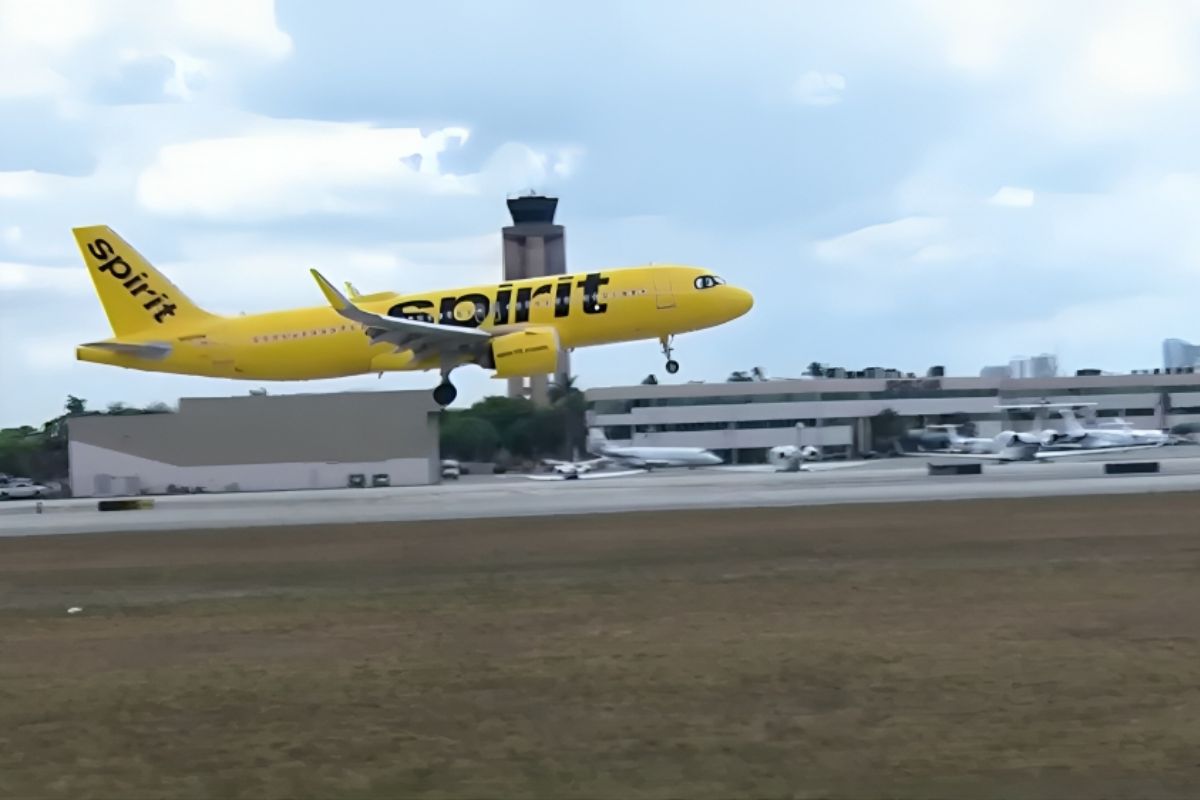Navigating Uncertainty – Spirit Airlines Incident Unveils Safety Concerns

In the vast expanse of the sky, where human ingenuity and technological marvels converge, there exists a delicate equilibrium between safety and uncertainty. This equilibrium was starkly illustrated in a recent incident involving a Spirit Airlines flight from Jamaica to Florida. Passengers found themselves thrust into a heart-pounding ordeal when the aircraft was forced to prepare for a possible water landing due to a suspected mechanical issue.
Table of Contents
ToggleSpirit Airlines Incident: Panic in the Cabin
The Airbus plane, bound for Fort Lauderdale, abruptly altered its course and safely made its way back to Montego Bay, Jamaica, as a precautionary response. Initially, passengers received reassurances from the pilot, but a sudden announcement instructing them to prepare for an emergency water landing sent shockwaves through the cabin.
Amidst the unfolding uncertainty, orange life vests became a stark reminder of the gravity of the situation, scattered across the floor amidst nervous murmurs and anxious glances exchanged between passengers.
The atmosphere inside the cabin swiftly transformed from one of relative calm to palpable panic, with the collective tension reflecting the profound sense of unease gripping those onboard.
Record-Breaking Weekend
Amidst a record-breaking start to the holiday weekend for airline travel, this incident unfolded against a bustling backdrop of activity in the skies. The Transportation Security Administration’s announcement of screening the highest number of travelers in a single day emphasized the sheer volume of flights crisscrossing the airways.
This surge in travel underscores the immense responsibility shouldered by airlines and aviation authorities to ensure the safety and well-being of passengers amidst such unprecedented activity. With airports teeming with travelers and aircraft constantly taking off and landing, maintaining rigorous safety standards becomes paramount.
The heightened scrutiny and attention to detail required in such circumstances highlight the dedication of aviation professionals to uphold the highest levels of safety, even in the face of extraordinary demand.
Similar Incidents: Growing Concerns
Unfortunately, the Spirit Airlines incident wasn’t an isolated event. Within a comparable timeframe, a United Airlines flight halted takeoff due to a reported engine fire, while a Southwest Airlines flight diverted due to a potential smell of smoke in the cabin.
Despite the adept handling of each situation by the flight crews, these occurrences compound a mounting unease among travelers regarding air travel safety. The clustering of such incidents amplifies perceptions of vulnerability during flight, prompting passengers to question the reliability of aircraft and the efficacy of safety protocols.
Each event, though managed without fatalities or major injuries, adds to a collective apprehension about the inherent risks of air travel. Such episodes underscore the critical importance of stringent safety measures and comprehensive risk management strategies within the aviation industry to assuage concerns and uphold public trust in the safety of commercial flights.
Safety Amidst Challenges
The recent surge of mishaps and mechanical incidents, especially those involving Boeing jets, has deeply unsettled the aviation industry. Instances like midflight blowouts and severe turbulence serve as stark reminders of the inherent risks inherent in air travel.
Despite these challenges, it’s crucial to recognize that commercial flights continue to be one of the safest modes of transportation in the United States. This commendable safety record owes much to the unwavering dedication and expertise of aviation professionals who tirelessly work to ensure the safety of passengers and crew alike.
The Human Factor: Coping with Fear and Uncertainty
Beyond the technical aspects of air travel safety, it’s crucial to consider the human element. For passengers, experiencing moments of panic and anxiety during a flight can leave a lasting impact on their perception of air travel safety. Airlines and aviation authorities must prioritize clear communication and support mechanisms to help passengers navigate through moments of fear and uncertainty.
Regulatory Oversight: Ensuring Safety and Improvement
In the wake of these incidents, regulatory bodies such as the Federal Aviation Administration (FAA) play a crucial role in ensuring accountability and promoting continuous improvement within the aviation industry. Close scrutiny and investigation of safety lapses are essential steps towards identifying root causes and implementing preventive measures to mitigate future risks.
Conclusion
As travelers grapple with moments of apprehension amidst these turbulent times, it’s crucial to foster an understanding of the complexities involved in air travel. Each flight represents a culmination of meticulous planning, rigorous training, and unwavering commitment to safety.
While incidents like the one experienced by the passengers of the Spirit Airlines flight may shake our confidence momentarily, they also highlight the resilience and preparedness of the aviation industry in the face of adversity.
In the vast expanse of the skies, where uncertainty looms large, it’s the unwavering dedication to safety that guides us through the clouds and brings us safely to our destinations.
And as we navigate through these challenges together, let us reaffirm our trust in the collective efforts aimed at ensuring that the skies remain a safe and welcoming domain for all who embark on the journey of flight.
Published by Azura Everhart
Hey, I am Azura Everhart a digital marketer with more than 5+ years of experience. I specialize in leveraging online platforms and strategies to drive business growth and engagement. View more posts







